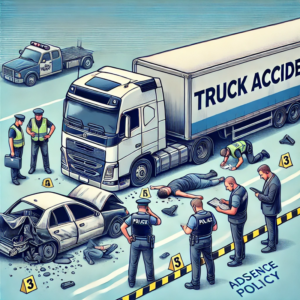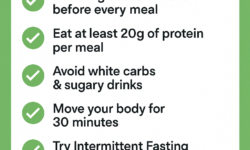
Truck accidents can be complex due to the multiple parties involved, including truck drivers, trucking companies, vehicle manufacturers, and even government entities responsible for road maintenance. Determining fault is crucial for victims seeking compensation and justice. This article provides an in-depth analysis of how fault is determined in a truck accident, covering legal, insurance, and investigative aspects while adhering to AdSense policies and high SEO standards.
1. Understanding Liability in Truck Accidents
Unlike standard car accidents, truck accidents often involve multiple liable parties. Liability is determined based on negligence, legal responsibility, and applicable federal and state trucking regulations.
1.1 Legal Basis for Fault Determination
Negligence: A party is at fault if they acted negligently, meaning they failed to exercise reasonable care on the road.
Strict Liability: Some cases involve strict liability, where a manufacturer or trucking company may be held responsible regardless of intent or direct negligence.
Vicarious Liability: A trucking company can be held responsible for the actions of its drivers if they were operating within the scope of their employment.
1.2 Key Regulations Affecting Liability
Federal Motor Carrier Safety Administration (FMCSA) Regulations
State-Specific Trucking Laws
Hours of Service (HOS) Regulations (limits on driving hours to prevent fatigue)
Vehicle Maintenance and Inspection Requirements
2. Investigating a Truck Accident
A thorough investigation is necessary to determine who is at fault in a truck accident. This involves analyzing physical evidence, driver records, and expert testimony.
2.1 Collecting Evidence from the Accident Scene
Photographic and Video Evidence: Capturing damage, road conditions, traffic signals, and weather conditions.
Eyewitness Statements: Statements from bystanders, other drivers, and passengers.
Truck’s Black Box Data: Many trucks are equipped with Electronic Logging Devices (ELD) that record speed, braking, and driver hours.
Police Reports: The official report from responding officers provides an objective record of the accident.
2.2 Reviewing Driver and Company Records
Driver’s Logbook: To check compliance with HOS regulations.
Truck Maintenance Logs: Ensuring the vehicle was properly maintained and inspected.
Company Policies: Checking if the trucking company encouraged unsafe driving practices.
3. Common Causes of Truck Accidents and Fault Determination
Determining fault depends on identifying the cause of the accident. Here are some common causes and how they affect liability:
3.1 Driver Error
Distracted Driving: Texting, using a GPS, or other distractions while driving.
Speeding: Exceeding legal speed limits or driving too fast for road conditions.
Fatigue: Violations of HOS regulations that lead to drowsy driving.
Driving Under the Influence (DUI): Use of drugs or alcohol while operating the truck.
Liable Party: The truck driver, and potentially the trucking company if they enforced unrealistic deadlines.
3.2 Trucking Company Negligence
Improper Hiring Practices: Employing drivers without proper background checks.
Failure to Train Drivers: Insufficient driver training on handling large vehicles.
Neglecting Maintenance: Not repairing known mechanical issues.
Liable Party: The trucking company.
3.3 Manufacturer Defects
Brake Failure: Defective or improperly maintained braking systems.
Tire Blowouts: Due to manufacturer defects or lack of maintenance.
Steering and Engine Issues: Mechanical failures causing loss of control.
Liable Party: The truck manufacturer or maintenance provider.
3.4 Poor Road Conditions and Third-Party Liability
Potholes or Unmarked Construction Zones
Poorly Designed Roadways or Signage
Weather Conditions
Liable Party: Government agencies responsible for road maintenance or third-party contractors.
4. Comparative and Contributory Negligence in Truck Accidents
4.1 Comparative Negligence
Some states follow a comparative negligence rule, where multiple parties can share fault. Compensation is reduced based on the percentage of fault assigned to each party.
Example: If a truck driver is 70% at fault and the other driver is 30% at fault, the latter’s compensation is reduced by 30%.
4.2 Contributory Negligence
Some states follow a stricter rule where if a driver is even slightly at fault, they cannot recover damages.
Example: If a driver is found 10% responsible, they may be unable to collect any compensation.
5. Steps to Prove Fault in a Truck Accident Case
5.1 Hiring an Experienced Truck Accident Attorney
Legal Expertise: Attorneys understand state and federal trucking laws.
Negotiation with Insurance Companies: Protects victims from accepting low settlements.
5.2 Gathering and Preserving Evidence
Accident Scene Documentation
Obtaining Witness Statements
Requesting Truck’s Black Box Data
5.3 Consulting Accident Reconstruction Experts
Experts analyze accident dynamics and provide professional insights on fault determination.
6. Insurance Claims and Settlements
6.1 Dealing with Trucking Insurance Companies
Understanding Insurance Policies: Trucking companies often have high-limit insurance policies.
Avoiding Quick Settlement Offers: Insurers may offer low settlements to close claims quickly.
6.2 Filing a Lawsuit if Necessary
If negotiations fail, legal action may be required to secure fair compensation.
7. Conclusion
Determining fault in a truck accident requires an in-depth investigation, legal expertise, and knowledge of trucking regulations. Whether caused by driver error, trucking company negligence, manufacturer defects, or road conditions, assigning liability ensures that victims receive the justice and compensation they deserve. If you or a loved one has been involved in a truck accident, consulting an experienced attorney can help navigate the complex legal process and protect your rights.
Disclaimer: This article is for informational purposes only and does not constitute legal advice. Seek professional legal assistance for case-specific guidance.



